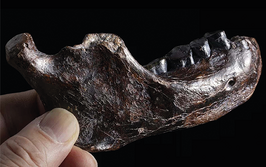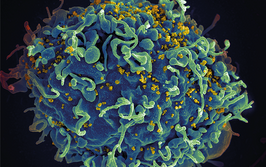Elaine Holmes
The Power List 2016

Elaine Holmes
Professor and Head of the Division of Computational and Systems Medicine, Imperial College London, UK
Passion: Recent decades have seen the recognition of the importance of the gut microbiome in human health. The microbiota are implicated in the aetiology or modulation of a wide range of diseases including inflammatory bowel disease, cardiovascular disease, type 2 diabetes, celiac disease, autism and certain cancers. There are multiple studies suggesting that modulation of the microbiome can be used to beneficially impact on disease risk or outcome, the most notable example being the treatment of antibiotic resistant Clostridium difficile using fecal microbial transplantation. Next generation sequencing techniques tend to focus on the composition of the microbiome rather than their functional activity. There is therefore a window of opportunity for metabolic profiling methods to generate functional readouts of the microbiome. Metabolites of either the gut bacteria themselves, or from co-metabolism of dietary substrates with the human host can be detected in biofluids such as urine, plasma and fecal extracts using 1H NMR spectroscopy and UPLC/GC-MS methods. Phenols, indoles, short chain fatty acids, methylamines (and other products of bacterial breakdown of choline), bile acids and biogenic amines can all be measured in either screening mode or by quantitative MS based methods. In this way, we can begin to learn more about the microbes underpinning specific disease states and move closer to developing new ways to target the microbiome in order to influence disease outcomes.
Pivotal moment: A pivotal moment in my research career was during my first postdoctoral appointment when I began to appreciate the value of combining computational pattern recognition and chemometric approaches to analyze and interpret NMR spectra and to develop bespoke multivariate statistical methods for interpreting spectral data. These approaches were able to efficiently detect the key metabolites that differentiated two or more biological states (for example, disease versus healthy) in an unbiased way. Application of this methodology to various toxic states promoted our understanding of mechanisms of toxicity; for example, identification of glutaric and adipic acid following administration of the renal papillary necrosis model (2-bromoethanamine) pointed to the inhibition of mitochondrial function as a key mechanistic driver, later supported by electron microscopic evidence.
Prediction: One of the most exciting technological advances is the development of rapid evaporative ionization mass spectrometry coupled to surgical devices. This technology, developed by Takats et al., allows almost real time analysis of samples and has been used in conjunction with surgical knives in surgical removal of tumors, using a database of spectra acquired from histologically-typed tumor tissues to predict whether the tissue is malignant. This same technology has been used with some success to identify bacteria isolated from sepsis patients, based largely on unique properties of their phospholipid coat, and looking forwards, perhaps this same technology could be directed towards rapid identification of antimicrobial resistant bacterial strains.


















